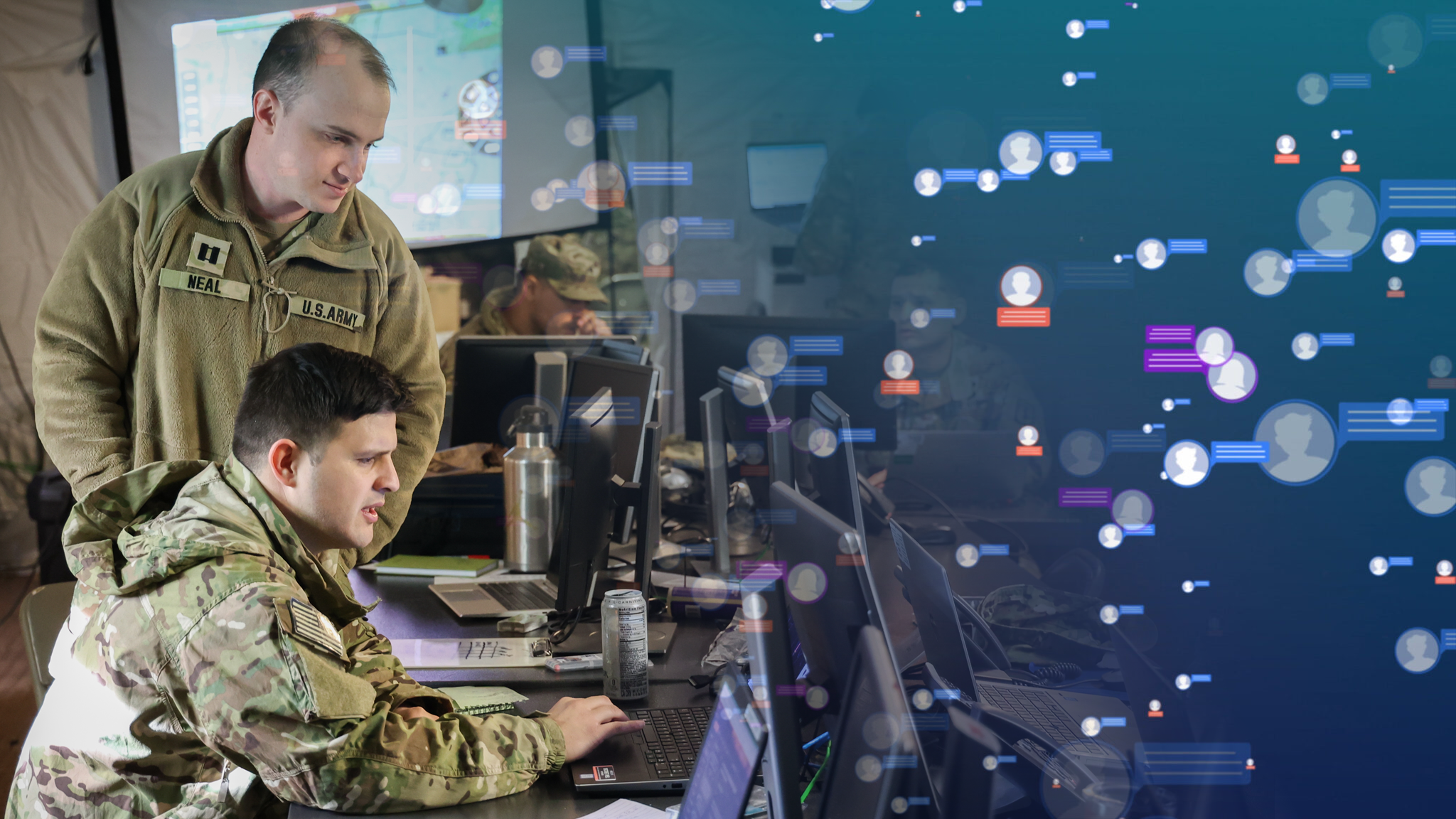JASPREET GILL

The Army is testing new AI-enabled social media tech to aid decision-making. (DVIDS soldier image, Getty social media graphic)
WASHINGTON — As the military explores how it can best use artificial intelligence to enhance operations on the battlefield, the Army is testing how one specific AI-enabled social media tool can help commanders make better informed decisions.
The technology, called Data Robot, was one of 17 technologies tested during this year’s Cyber Quest, an experiment aimed at emerging technologies, at Fort Gordon, Ga. Led by the US Army Cyber Center of Excellence, soldiers tested several technologies from 11 different industry vendors spanning from electronic warfare to networking to cyber this past month.
“This is our opportunity to make sure that those new technologies will actually work when we take them out to the field,” Maj. Gen. Paul Stanton, commanding general of the US Army Cyber Center of Excellence and Fort Gordon, told reporters July 28. “And over the years I’ve noted that there’s one very distinct difference between capabilities that are designed for industry and commercial purposes, and capabilities that we require in the United States Army. And that has been our enemies are trying to see us constantly in order to kill us.
“So regardless of how sound the science is from an industry or academic or scientific perspective, it oftentimes needs to be tweaked in order to meet some of the fundamental requirements that we have in the Army,” he added.
Data Robot used open-source data to detect bots and deep-fake algorithms, Col. John Agnello, director of the Army’s program officer for information advantage, explained.
The tech could potentially help the service in the information advantage and dominance space by creating an “overlay” for a commander to see and make decisions — a capability the Army doesn’t have yet, Col. Brett Riddle, director of the Army’s cyber battle lab, added.
The Army over the past several years has been trying to figure out what exactly information advantage will look like for its commanders and is developing a doctrine to define the concept. Broadly, there are five pillars: enabling decision-making, protecting friendly information, informing and educating domestic audiences, influencing international audiences and conducting information warfare, then- Army Cyber Command chief Lt. Gen. Stephen Fogarty said in 2021, according to C4ISRNET.
Social media would presumably play a role in at least three of those categories. Agnello said more recently DataRobot was something that soldiers in the Indo-Pacific specifically want, and that the technology was used during an exercise in Pacific Sentry in Hawaii for bot detection.
“So what we asked Data Robot to do is… can you create that overlay for us using information from open source?” Riddle said. “And can we use some military systems to help take that open source information and provide it onto a [Command Post Computing Environment] device or system? And we were able to successfully provide that overlay.”
The service is still working through some “technical issues” with Data Robot and looking at how the data is stored, but Riddle said there was “promising work done” with it. Stanton said the tool needed 90 days worth of data from an operating environment in order to train existing AI algorithms off social media feeds.
“You know, social media in the Indo-Pacific doesn’t look like social media in the United States,” he said. “But then once trained over the 90 day period, it was effective at determining tweets that emanated from bots.”
Some of the technologies, like Data Robot, have been selected to use in next year’s Project Convergence, the Army’s capstone project meant to inform the Pentagon’s broader Joint All Domain Command and Control effort. (The service decided not to host the large-scale exercise this year as it started re-thinking the effort.)
Other technologies tested during Cyber Quest included a Peraton system that was able to take electromagnetic signatures and provide heat maps in near-real time. Partners from US Army Forces Command, the Indo-Pacific region, Australia, Canada and broader science and technology community were also a part of the experiments.
No comments:
Post a Comment